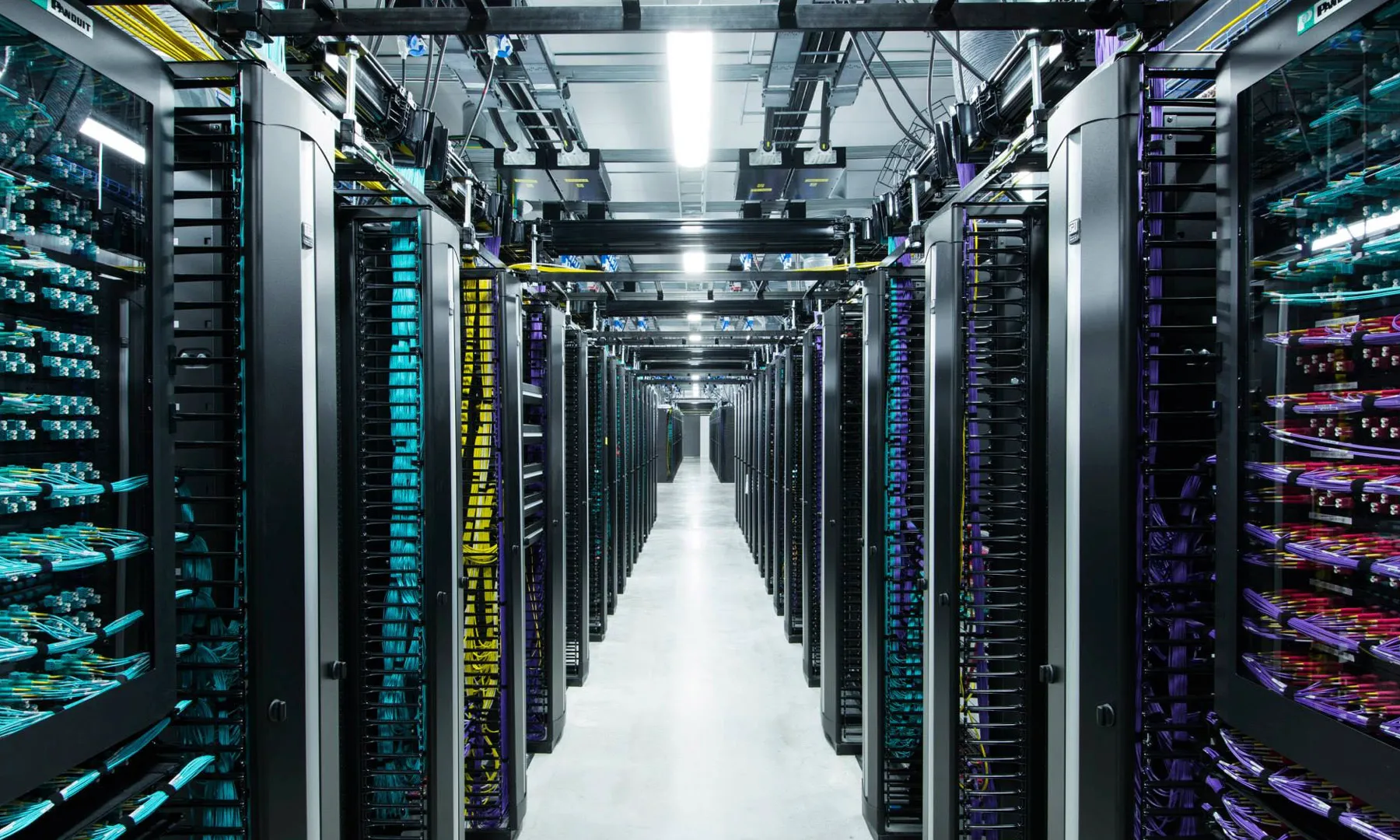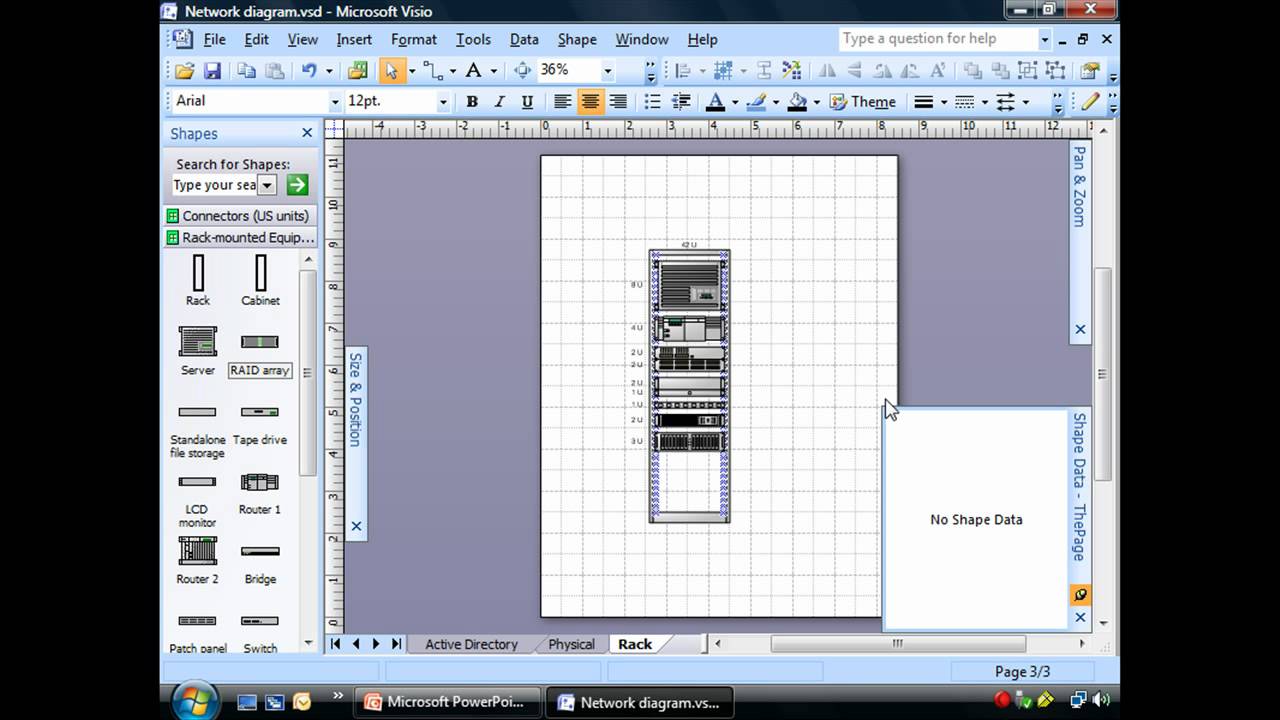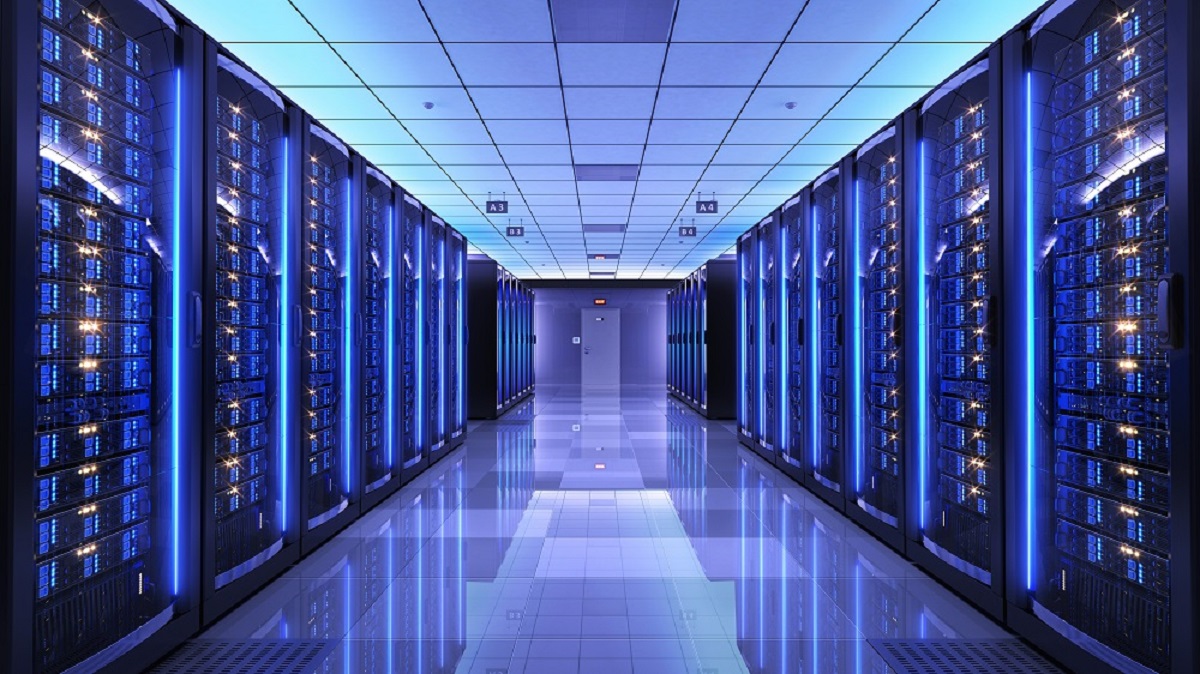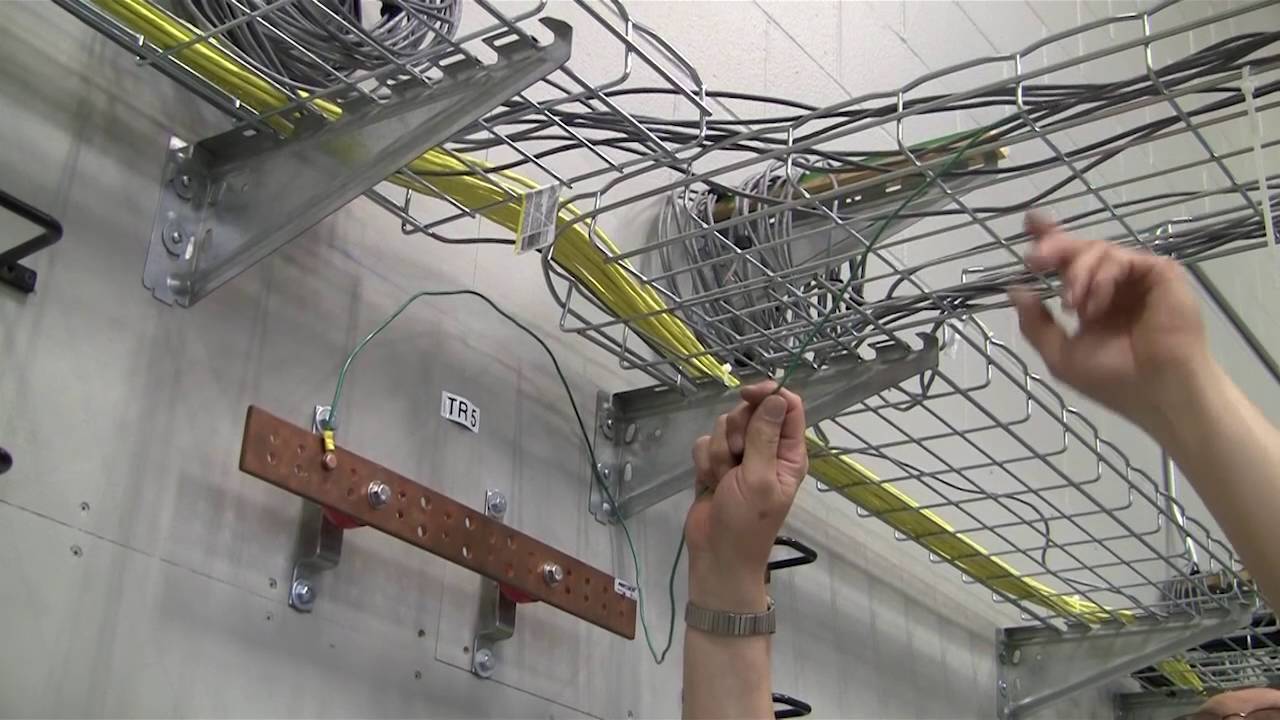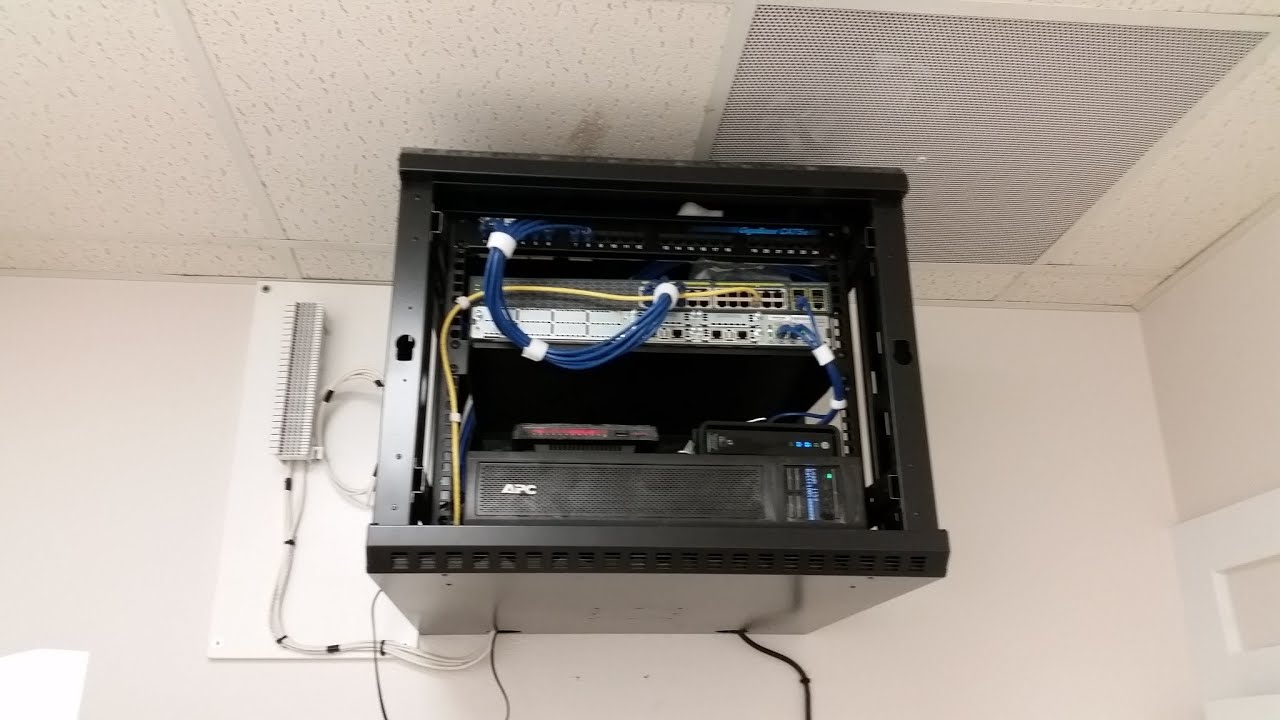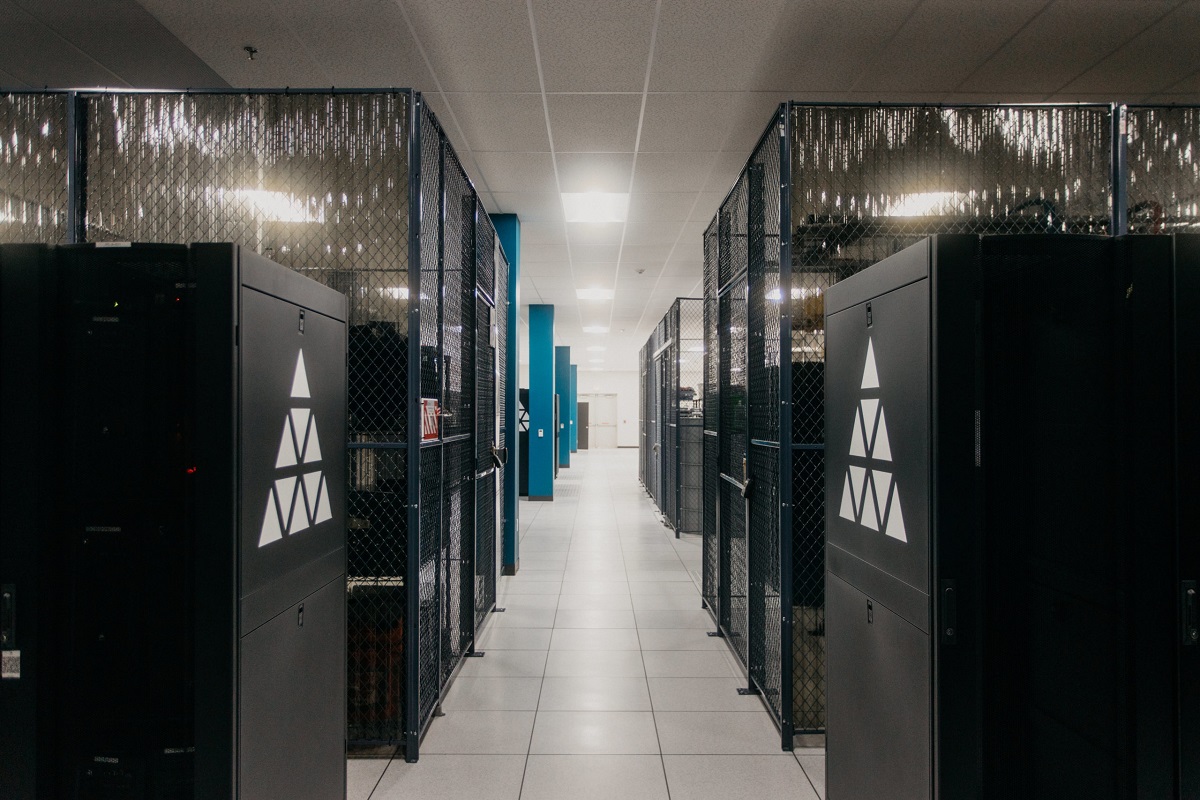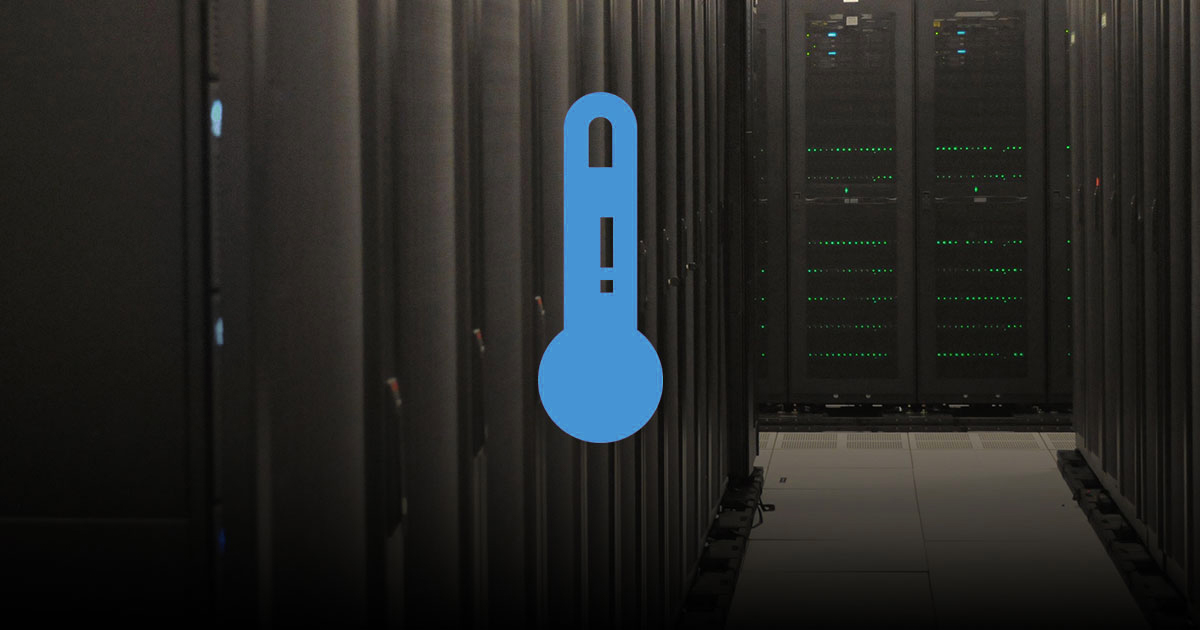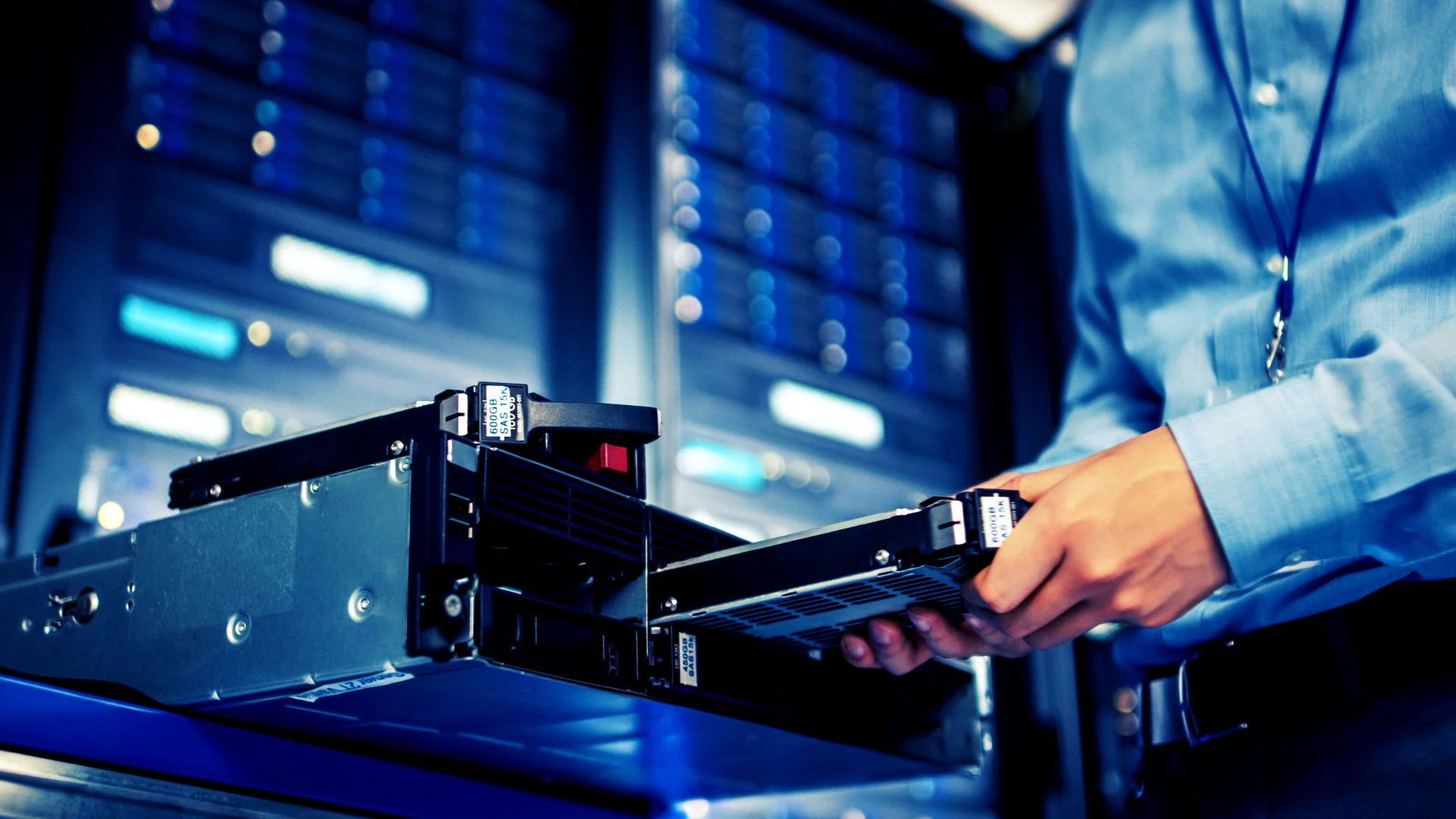Introduction:
Welcome to the world of server rack infrastructure – the backbone of modern technology. In today’s digital era, where data is king and uninterrupted connectivity is essential, a properly designed and maintained server rack infrastructure is crucial for the smooth operation of businesses and organizations.
A server rack infrastructure involves the careful planning, installation, and management of server racks to support the hardware and networking equipment that power a company’s IT infrastructure. It serves as a centralized hub, housing servers, switches, routers, and other critical devices.
The server rack infrastructure plays a pivotal role in maintaining the integrity, availability, and security of data and applications. It ensures that these vital components are organized, protected, and easily accessible. Without a robust server rack infrastructure, businesses would face challenges such as frequent downtime, inefficient operations, and compromised data.
In this article, we will delve into the various aspects that make a server rack infrastructure work seamlessly. From the physical layout to power and cooling requirements, cable management, security measures, and maintenance practices, we will explore the critical elements that contribute to the successful operation of a server rack infrastructure.
Whether you are a business owner, IT professional, or simply someone interested in understanding how the IT infrastructure functions, this article will provide you with valuable insights into the essential elements required to create an efficient and reliable server rack infrastructure.
What is a Server Rack Infrastructure?
A server rack infrastructure refers to the physical framework and components that house and support the servers, networking equipment, and other essential devices in an IT environment. It is a specialized structure designed to provide organization, accessibility, and protection for the hardware that powers a company’s digital operations.
At its core, a server rack infrastructure consists of server racks – typically metal cabinets or frames – designed to hold and store servers and related equipment. These racks are standardized to ensure compatibility between different hardware components and make maintenance and upgrades more convenient.
Server racks are designed to house various equipment, such as power distribution units (PDUs), Ethernet switches, patch panels, and storage arrays. They utilize a combination of horizontal rails, vertical mounting columns, and side panels to provide a secure and adaptable environment for the equipment.
Additionally, server rack infrastructure incorporates cable management solutions to organize and route the complex web of cables connecting the devices. This helps to prevent cable congestion, reduces the risk of accidental disconnections, and allows for efficient troubleshooting and maintenance.
The server rack infrastructure also takes into consideration other critical aspects, such as power and cooling requirements. Power distribution units (PDUs) are installed within the server racks to distribute power to the various devices. Cooling mechanisms, such as fans and air conditioning systems, are implemented to ensure that the environment remains at optimal temperatures to prevent overheating and equipment failure.
Finally, security measures are incorporated into the server rack infrastructure to protect the sensitive data and equipment from unauthorized access or physical theft. This may include implementing locked cabinets, biometric access controls, video surveillance, and environmental monitoring systems to detect any potential threats or breaches.
In summary, a server rack infrastructure serves as the backbone of an organization’s IT operations. It provides a structured and secure environment for servers, networking equipment, and other devices, ensuring their functionality and reliability. By effectively managing power, cooling, cable organization, and security, a well-designed server rack infrastructure contributes to the smooth operation of the overall IT infrastructure.
The Importance of a Proper Server Rack Infrastructure
A proper server rack infrastructure is of paramount importance for businesses and organizations that rely on technology to operate efficiently and securely. It provides the foundation for a reliable and well-organized IT infrastructure, offering several key benefits:
1. Organization and Accessibility: A well-designed server rack infrastructure ensures that servers and networking equipment are neatly arranged and easily accessible. This makes it easier for IT technicians to troubleshoot issues, perform maintenance tasks, and make necessary upgrades, resulting in reduced downtime and improved operational efficiency.
2. Protection and Security: A proper server rack infrastructure incorporates security measures to safeguard valuable data and equipment. Locked cabinets, biometric access controls, and surveillance systems help prevent unauthorized access, protecting against theft, tampering, and potential breaches. The implementation of environmental monitoring systems also helps detect and mitigate risks such as temperature fluctuations and humidity.
3. Scalability and Adaptability: A well-planned server rack infrastructure allows for easy scalability and adaptability. As your business grows, the infrastructure can accommodate additional servers and equipment without major disruption. Modular designs and the use of standardized components make it simple to add or replace equipment as needed, providing flexibility for future expansion.
4. Enhanced Performance and Reliability: By incorporating proper cooling mechanisms, power distribution, and cable management, a server rack infrastructure ensures optimal performance and reliability. Cool air is directed precisely to the equipment, preventing overheating and reducing the risk of system failures. Effective cable management minimizes signal interference and reduces the chances of accidental disconnects, improving overall data transmission quality and network stability.
5. Cost Efficiency: A well-designed server rack infrastructure can help businesses save money in the long run. Through improved energy efficiency and reduced downtime, businesses can lower their operational costs. Additionally, proper cable management prevents the need for costly cable replacements and minimizes the risk of accidental damage to cables or equipment during maintenance or upgrades.
In summary, a proper server rack infrastructure is essential for businesses and organizations that rely on technology to operate effectively and securely. It provides organization, accessibility, protection, scalability, enhanced performance, and cost efficiency. By investing in a well-designed server rack infrastructure, businesses can ensure the stability, reliability, and long-term success of their IT operations.
Factors to Consider when Designing a Server Rack Infrastructure
Designing an efficient and reliable server rack infrastructure requires careful consideration of various factors. By taking these factors into account during the planning stage, businesses can ensure a well-optimized infrastructure that meets their current and future needs. Here are some key factors to consider:
1. Space and Physical Layout: Assess the available space and layout of the server room or data center where the infrastructure will be deployed. Consider factors such as floor space, ceiling height, and any structural limitations that may affect the installation and maintenance of the server racks. Proper measurements and calculations are essential to ensure optimal utilization of space and efficient airflow.
2. Power and Cooling Requirements: Determine the power needs of the equipment and plan the power distribution accordingly. Calculate the total power consumption and ensure sufficient power outlets or power distribution units (PDUs) are installed within the server racks. Additionally, consider the cooling requirements to maintain an optimal operating temperature for the equipment. Evaluate the need for air conditioning, ventilation, or other cooling mechanisms to prevent overheating.
3. Scalability and Flexibility: Anticipate future growth and scalability when designing the server rack infrastructure. Opt for adjustable and modular racks that can accommodate additional equipment as needed. Plan for cable management solutions that can be easily expanded or reconfigured to support the growing network infrastructure. This will save time and effort on future upgrades or expansion.
4. Cable Management: Proper cable management is essential for a well-organized server rack infrastructure. Plan effective cable routing to eliminate cable clutter and ensure efficient airflow. Use cable management accessories such as cable trays, sleeves, and labels to neatly organize and identify cables. This improves troubleshooting, maintenance, and scalability, and reduces the risk of accidental cable damage or disconnections.
5. Security Measures: Consider the level of security required for the server rack infrastructure. Evaluate the need for physical security features, such as locked cabinets, access controls, and surveillance systems, to prevent unauthorized access and protect valuable data and equipment. Implement environmental monitoring systems to detect potential threats such as temperature variations or humidity levels that could impact system performance.
6. Maintenance and Accessibility: Ensure that the server rack infrastructure is designed to facilitate easy maintenance and accessibility. Plan for adequate aisle space between racks for technicians to move freely and access equipment. Consider the weight-bearing capacity of the racks and ensure easy access to the rear panels for cable management and equipment servicing.
7. Compliance and Regulations: Familiarize yourself with industry regulations and compliance requirements that may be applicable to your organization. Ensure that the server rack infrastructure design adheres to these regulations, especially in terms of data security, electrical safety, and physical access controls.
In summary, designing a server rack infrastructure involves careful consideration of various factors, including space and physical layout, power and cooling requirements, scalability and flexibility, cable management, security measures, maintenance, and compliance. By addressing these factors, businesses can create a server rack infrastructure that is secure, reliable, and capable of supporting their current and future technology needs.
Physical Aspects of a Server Rack Infrastructure
When designing a server rack infrastructure, it is crucial to consider the physical aspects that contribute to its functionality, organization, and accessibility. Paying attention to these aspects ensures that the infrastructure can effectively house, protect, and maintain the server and networking equipment. Here are key physical aspects to consider:
1. Server Racks: The server racks themselves form the foundation of the infrastructure. They provide the structural support and organization for the equipment. Consider the size, height, and weight capacity of the racks to accommodate the servers and other devices. Opt for sturdy, standardized racks that align with industry guidelines and offer flexibility for installation and maintenance.
2. Rack Mounting: Servers and networking equipment are typically mounted inside the racks using standardized rack units (U). Ensure that the rack units align with the equipment being installed. Use proper mounting hardware and techniques to secure the devices in place. Properly aligning and fastening the equipment in the racks prevents movement, potential damage, and improves airflow for cooling.
3. Ventilation and Airflow: Efficient airflow is vital for maintaining optimal operating temperatures for the equipment. Plan for adequate ventilation and airflow management within the server rack infrastructure. Position the racks to allow for proper hot and cold aisle airflow, and use fans or cooling units strategically to ensure a uniform distribution of cool air. Implementing air filters also helps to minimize dust and particulate matter that could potentially affect equipment performance.
4. Cable Management: Proper cable management is key to maintaining a neat and organized server rack infrastructure. Utilize cable management solutions such as cable trays, raceways, and vertical cable managers to route and secure cables effectively. Labeling cables and using color-coding techniques improve identification and reduce troubleshooting time. Well-organized cables not only enhance the appearance of the infrastructure but also prevent cable tangles, reduce the risk of accidental disconnections, and aid in equipment maintenance and upgrades.
5. Rack Accessories and Components: Various rack accessories and components enhance the functionality and usability of the server rack infrastructure. Consider incorporating features such as sliding shelves, cable management arms, blanking panels, and power distribution units (PDUs). These accessories help to maximize the available space, facilitate cable management, and accommodate power distribution requirements effectively.
6. Rack Security: Protecting the equipment housed in the server rack infrastructure is essential. Implement physical security measures such as sturdy doors or lockable cabinets to restrict access. Biometric locks, security cameras, and monitoring systems further enhance the security of the infrastructure. By safeguarding the physical environment, businesses can reduce the risk of unauthorized access, theft, and tampering.
7. Aesthetic Considerations: While not directly impacting functionality, the aesthetic aspect of the server rack infrastructure can contribute to the overall professionalism and organization of the IT environment. Ensure that the infrastructure is clean, free from clutter, and visually appealing. Consider factors such as proper labeling, uniform cable management techniques, and color coordination of components to create a visually appealing and user-friendly environment.
By considering these physical aspects during the design and implementation of a server rack infrastructure, businesses can create an optimized and efficient environment to house their servers and networking equipment. A well-organized and properly maintained physical infrastructure ensures a reliable and accessible IT environment.
Power and Cooling in a Server Rack Infrastructure
Power and cooling are critical components of a server rack infrastructure, ensuring the optimal functioning and longevity of the servers and networking equipment. Efficient power distribution and effective cooling mechanisms are key considerations in the design and maintenance of the infrastructure. Here are important aspects to consider:
1. Power Distribution Units (PDUs): PDUs are used to distribute power to the various devices within the server rack infrastructure. When designing the infrastructure, consider the power needs of each device and ensure that the PDUs have adequate power capacity to support the equipment. It’s essential to plan and allocate sufficient power outlets or PDUs to avoid overloading circuits and ensure proper power distribution.
2. Redundancy and Backup Power: Implementing redundancy and backup power solutions is crucial to minimize downtime and maintain continuous operation. Consider installing uninterruptible power supply (UPS) devices to provide backup power in the event of a power outage. Redundant power supplies for servers and networking equipment can also be advantageous, ensuring that there is no single point of failure in the power system.
3. Cooling Solutions: Heat generated by servers and networking equipment must be effectively dissipated to maintain optimal operating temperatures. Evaluate the cooling requirements of the infrastructure and consider both active and passive cooling solutions. Active cooling mechanisms may include fans, liquid cooling systems, or air conditioning units, while passive cooling techniques may involve proper aisle and rack layout to facilitate natural airflow. Strive to maintain a consistent temperature and proper airflow management within the server rack infrastructure to prevent equipment overheating and potential failures.
4. Hot Aisle/Cold Aisle Configuration: Implementing a hot aisle/cold aisle configuration is a best practice in server rack infrastructure design. This involves aligning racks to create alternating hot and cold aisles to facilitate efficient airflow. Cold air is directed towards the front of the racks, where the servers intake cool air, while hot air is expelled from the rear of the racks. This configuration helps to minimize the mixing of hot and cold air, improving cooling efficiency and overall performance.
5. Cabinet Ventilation: Proper ventilation within server rack cabinets is essential for efficient cooling. Consider the placement of fans or ventilation units to circulate cool air through the equipment and expel warm air effectively. Ensure vents and perforations on the cabinets are unobstructed, allowing for the free flow of air. Additionally, implementing air filters can help reduce dust accumulation and maintain a clean and dust-free environment.
6. Environmental Monitoring: Monitoring the temperature, humidity, and other environmental factors is crucial for maintaining optimal operating conditions within the server rack infrastructure. Implement environmental monitoring systems to continuously monitor and alert for any irregularities that could jeopardize the integrity of the equipment. These systems help detect potential cooling failures or environmental changes that may negatively impact the infrastructure’s performance.
By carefully considering power and cooling requirements in the design and maintenance of a server rack infrastructure, businesses can ensure uninterrupted and reliable operation of their servers and networking equipment. Proper power distribution and cooling mechanisms not only prevent equipment failures due to overheating but also contribute to energy efficiency, reduce downtime, and extend the lifespan of the infrastructure.
Organizing Cables in a Server Rack Infrastructure
Effective cable management is vital for maintaining a well-organized and efficient server rack infrastructure. With a multitude of cables connecting various devices, proper organization ensures ease of maintenance, reduces the risk of cable damage, and improves overall airflow and accessibility. Here are some key considerations for organizing cables:
1. Planning and Labeling: Before installing the equipment, plan the layout and routing of cables within the server rack infrastructure. Take into account the optimal paths for cable runs and ensure they are kept separate from power cables to avoid potential interference. Label each cable foot with clear and descriptive labels to facilitate easy identification and troubleshooting.
2. Cable Length: Use appropriate cable lengths to minimize slack and clutter within the infrastructure. Excessive cable length can lead to messy cabling and restrict airflow. Measure and cut cables to the required length, leaving enough slack for any necessary movement or equipment changes in the future.
3. Cable Routing Solutions: Utilize various cable routing solutions to keep cables organized and tidy. Cable management accessories such as horizontal and vertical cable management panels, cable trays, and cable ties can be used to bundle and route cables in an organized manner. These solutions help prevent cable congestion, reduce the risk of accidental disconnections, and improve overall accessibility.
4. Color Coding: Implement a color-coding system to visually differentiate between different types of cables or cable functions. This makes it easier to identify specific cables during troubleshooting or maintenance, reducing downtime and improving efficiency. Use colored cable ties, labels, or wraps to distinguish categories such as power, network, or data cables.
5. Velcro Ties or Cable Clips: Use Velcro ties or cable clips to bundle groups of cables together. Velcro ties can be easily adjusted and reusable, allowing for flexibility in cable management. Cable clips help secure cables to the rack and prevent them from tangling or interfering with equipment removal or installation.
6. Patch Panels and Cable Management Arms: Utilize patch panels and cable management arms for network connectivity. Patch panels provide a centralized location for connecting network cables, streamlining cable management and reducing the risk of cable damage. Cable management arms attach to the rear of the rack and provide a designated space to guide and secure network cables, improving overall cable organization.
7. Documentation: Maintain thorough documentation of the cable layout within the server rack infrastructure. This documentation should include the labeled cable connections, cable lengths, and any specific routing or configuration details. Having detailed documentation assists in troubleshooting, future maintenance, and system upgrades.
By implementing efficient cable management practices in a server rack infrastructure, businesses can reduce the risk of cable-related issues, improve system accessibility, and enhance overall performance. Proper planning, labeling, cable routing, color coding, and documentation contribute to a tidy and well-organized infrastructure, enabling efficient maintenance and ensuring reliable connectivity.
Security Measures for a Server Rack Infrastructure
Ensuring the security of a server rack infrastructure is crucial to protect the sensitive data and equipment housed within it. Implementing appropriate security measures helps safeguard against unauthorized access, physical tampering, theft, and other potential threats. Here are important security measures to consider for a server rack infrastructure:
1. Lockable Cabinets or Enclosures: Deploy server rack cabinets or enclosures with lockable doors to restrict access to authorized personnel only. Physical barriers provide an added layer of protection against unauthorized access and theft, helping to ensure the confidentiality and integrity of the infrastructure.
2. Access Controls: Incorporate access control systems to manage and monitor entry into the server rack area. This may include card readers, biometric systems, or keypad locks. Implement strict access policies and limit access to authorized individuals who require physical access to the infrastructure for maintenance or management purposes.
3. Surveillance Systems: Install security cameras or video surveillance systems to monitor the server rack area. Strategically position cameras to cover entrances, exits, and critical areas of the infrastructure. Recorded footage can be used to identify and investigate any security incidents or suspicious activities.
4. Environmental Monitoring: Implement environmental monitoring systems within the server rack infrastructure. These systems help detect and alert against environmental conditions that could potentially impact the equipment, such as temperature fluctuations, humidity levels, moisture, or water leaks. Early detection of such conditions allows for timely intervention and prevents damage or failures.
5. Cable Security: Protect cables from unauthorized access or tampering by implementing secure cable management solutions. Use locking cable connectors or tie cables to trays or cable management arms securely. This helps prevent unauthorized individuals from gaining physical access to the infrastructure through cable manipulation or removal.
6. Inventory Management: Maintain an accurate inventory of all equipment within the server rack infrastructure. Regularly update the inventory list, including hardware details and serial numbers. This assists with monitoring and identifying any unauthorized equipment additions or potential security breaches.
7. Security Audits and Penetration Testing: Conduct regular security audits and penetration testing to identify vulnerabilities and potential weaknesses in the server rack infrastructure’s security. Engage professionals to assess the infrastructure’s overall security posture and recommend necessary improvements or remediation measures.
8. Employee Training and Awareness: Educate employees about the importance of security protocols and ensure they understand their roles and responsibilities in protecting the server rack infrastructure. Create guidelines and train employees on physical security practices, access control procedures, and reporting suspicious activities to mitigate potential security risks.
By implementing a comprehensive security strategy encompassing physical barriers, access controls, surveillance, environmental monitoring, cable security, inventory management, audits, employee training, and awareness, businesses can safeguard their server rack infrastructure from unauthorized access, theft, and potential security breaches.
Common Challenges in Maintaining a Server Rack Infrastructure
Maintaining a server rack infrastructure requires ongoing attention and effort to ensure its optimal performance and reliability. However, several challenges can arise during the maintenance process. Being aware of these challenges allows businesses to proactively address them and minimize their impact. Here are some common challenges in maintaining a server rack infrastructure:
1. Cable Management: Cable management can become a significant challenge as the infrastructure grows and new equipment is added. Cables can become tangled or disorganized, making it difficult to identify and troubleshoot connectivity issues. Regular cable audits and implementing proper cable management practices are essential to maintain a clean and organized infrastructure.
2. Capacity Planning and Scalability: As businesses expand their IT infrastructure, the server rack infrastructure may struggle to keep up with the increasing demands. Inadequate capacity planning can lead to insufficient power, cooling, and space to accommodate new equipment. Regularly assessing capacity needs and implementing scalable infrastructure designs allow for seamless growth and prevent performance bottlenecks.
3. Power and Cooling Management: Managing power consumption and cooling efficiency can present challenges. Overloaded power circuits can lead to intermittent failures or complete outages. Insufficient cooling or improper airflow can result in equipment overheating, leading to failures or reduced lifespan. Continuous monitoring and regular maintenance help mitigate these challenges.
4. Equipment Maintenance: Regular equipment maintenance is crucial for optimal performance and preventing potential failures. However, maintenance tasks, such as firmware updates or component replacements, can disrupt operations if not planned properly. Establishing maintenance schedules, testing procedures, and implementing redundant systems help minimize the impact of maintenance activities on the infrastructure.
5. Environmental Factors: The physical environment where the server rack infrastructure is located can pose challenges. Excessive heat, humidity, or dust can negatively impact the equipment’s performance. Proper environmental monitoring, regular cleaning, and implementing proper cooling and airflow management techniques help mitigate these challenges.
6. Documentation and Asset Management: Inadequate documentation and asset management practices can create challenges in maintaining the server rack infrastructure. Without proper records of equipment, configurations, and connections, troubleshooting and upgrades become time-consuming and error-prone. Regularly updating documentation and utilizing asset management tools streamline maintenance processes.
7. Security and Access Control: Ensuring the security and integrity of the infrastructure can be challenging. Unauthorized access attempts, physical theft, or tampering can compromise the data and equipment within the server rack infrastructure. Establishing robust physical security measures, access controls, and regularly reviewing security protocols help mitigate these risks.
8. Skill and Knowledge Gaps: Maintaining a server rack infrastructure requires specialized skills and knowledge. Keeping up with evolving technologies and best practices can be challenging for IT teams. Investing in continuous training and staying informed about industry advancements helps bridge skill and knowledge gaps and ensures effective maintenance.
By recognizing and addressing these common challenges, businesses can proactively maintain their server rack infrastructure, ensuring its availability, scalability, efficiency, and robust security.
Maintenance and Upkeep of a Server Rack Infrastructure
Maintenance and proper upkeep are vital for ensuring the optimal performance, reliability, and longevity of a server rack infrastructure. Regular monitoring, preventive maintenance, and timely upgrades are essential to identify and address potential issues proactively. Here are key aspects to consider for the maintenance and upkeep of a server rack infrastructure:
1. Regular Inspections: Perform routine visual inspections of the server rack infrastructure to identify any visible signs of wear, damage, or improper cable management. Check for loose cables, bent connectors, or any physical damage to the equipment or racks. Regular inspections help catch potential issues before they escalate.
2. Cleaning and Dust Control: Dust and debris can accumulate over time and impact the performance and reliability of the equipment. Regularly clean the server rack infrastructure, including the racks, equipment, vents, and filters. Use appropriate tools and methods to remove dust and minimize the risk of overheating or equipment failures caused by an excessive buildup of dust.
3. Firmware and Software Updates: Keep the firmware and software of the servers and networking equipment up to date. Regularly check for vendor updates, security patches, and bug fixes. Implement stringent change management procedures to ensure proper testing, scheduling, and execution of updates without disrupting critical operations.
4. Power and Cooling Maintenance: Regularly monitor and maintain power and cooling systems within the server rack infrastructure. Ensure that power outlets and PDUs are properly connected and function correctly. Regularly clean and replace air filters, check the functionality of cooling fans or systems, and monitor temperature and humidity levels to prevent overheating and maintain optimal conditions.
5. Cable Management and Organization: Continuously manage and organize cables within the server rack infrastructure. Regularly perform cable audits to identify and address any cable management issues, such as tangled or damaged cables. Use proper cable management accessories, labels, and routing techniques to maintain a clean, organized, and easily maintainable infrastructure.
6. Documentation Updates: Keep documentation up to date regarding the server rack infrastructure. This includes equipment inventory, cable layouts, configurations, and any changes or upgrades made. Well-maintained documentation helps in troubleshooting, future expansion planning, and efficiently managing the infrastructure.
7. Spare Parts and Redundancy: Maintain an inventory of spare parts, such as power supplies, fans, and cables, to facilitate quick replacement in case of failures or emergencies. Implement redundancy where necessary to minimize single points of failure and ensure continuous operations.
8. Monitoring and Alerts: Utilize monitoring tools that provide real-time alerts and notifications of critical events or potential issues within the server rack infrastructure. Set up monitoring for temperature, humidity, power consumption, and equipment health. Regularly review and respond to alerts to prevent or address any potential threats or performance degradation.
By diligently following a maintenance plan and adhering to best practices, businesses can ensure the longevity and reliable performance of their server rack infrastructure. Regular inspections, cleaning, firmware updates, power and cooling maintenance, cable management, documentation updates, spare parts management, and proactive monitoring contribute to a well-maintained infrastructure that supports the organization’s IT needs.
Conclusion
A well-designed and properly maintained server rack infrastructure is vital for businesses and organizations that rely on technology for their operations. It provides a structured and secure environment for servers, networking equipment, and cables. By considering factors such as physical layout, power and cooling, cable management, and security, businesses can optimize the performance, reliability, and scalability of their IT infrastructure.
The server rack infrastructure plays a crucial role in organizing and protecting the hardware components that power a company’s IT operations. It ensures proper power distribution, efficient cooling, and effective cable management, reducing the risk of downtime and equipment failures. Implementing security measures such as access controls, surveillance systems, and environmental monitoring helps safeguard the infrastructure against unauthorized access and physical threats.
Maintaining a server rack infrastructure requires regular inspections, cleaning, firmware and software updates, power and cooling maintenance, cable organization, documentation updates, spare parts management, and proactive monitoring. By addressing these maintenance tasks, businesses can ensure the optimal performance and longevity of their infrastructure.
In conclusion, a well-designed, properly maintained, and secure server rack infrastructure is essential for businesses and organizations that rely on technology. It provides the foundation for an efficient and reliable IT infrastructure, supporting critical operations and protecting valuable data. By prioritizing factors such as physical layout, power and cooling, cable management, security measures, and regular maintenance, businesses can create a resilient infrastructure that meets their current and future technology needs.







